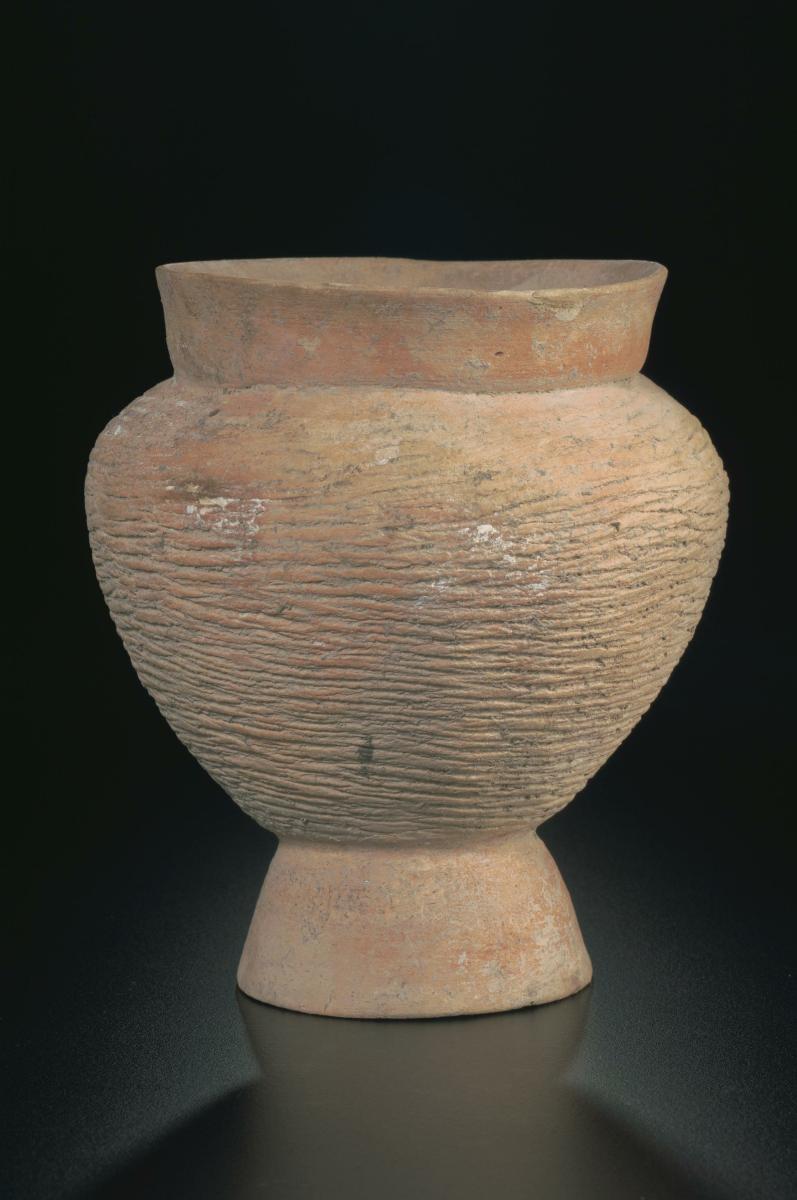This thinly, potted red jar has a raised mouthrim and a tall flared foot. It was made of coils of clay which were joined and paddle beaten for added strength. The vessel is decorated with paddled cord-mark patterns, which extend from the shoulder.The site of Ban Chiang was first discovered in 1957. Pottery was found with skeletal remains, glass beads as well as iron and bronze bracelets. Early Period pottery consisted mainly of ceramic vessels in ring-based or pedestalled forms. Decorations were mostly abstract geometric and curvilinear shapes divided into bands across the vessel.Painted vessels such as this were probably not used as everyday ware in the Ban Chiang culture. These vessels were probably used as burial jars to contain either food or objects for the decesaed in their afterlife.















